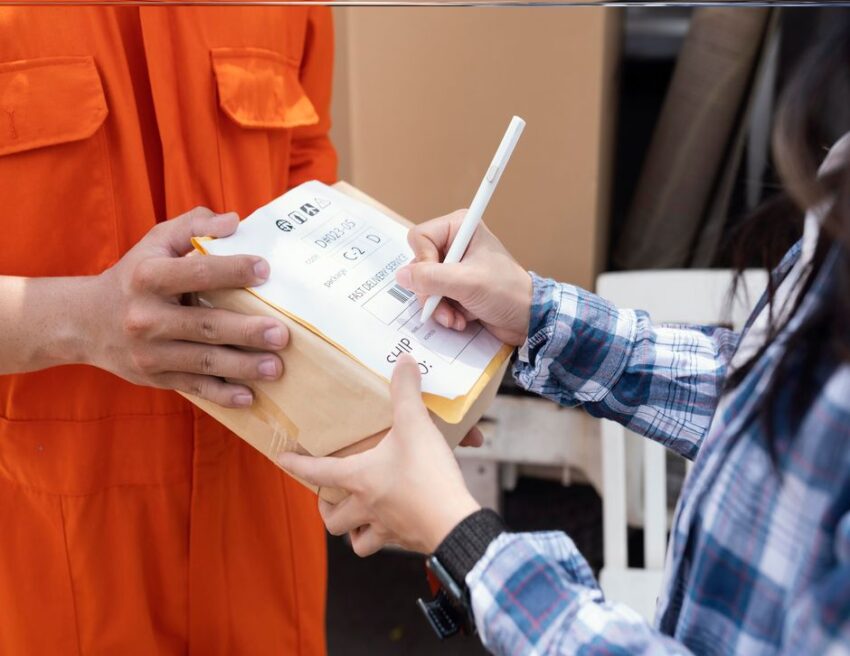A Bill of Lading, commonly known as B/L, BoL, or Waybill, stands as the essential document that independent freight forwarders must adeptly manage when handling international cargo movements. Irrespective of the cargo’s nature or the chosen mode of transportation, the Bill of Lading remains an indispensable requirement. Essentially, it constitutes a legally binding document issued by the carriers to the independent freight forwarders responsible for overseeing the shipment. This crucial document comprehensively encapsulates vital shipment particulars, encompassing dimensions, destination details, and the nature of the commodities involved. In this article, we present a concise step-by-step guide to filling up all the fields in the Bill of Lading.

Independent freight forwarders guide to filling up a Bill of Lading
Information contained in the Bill of Lading
This legally binding document works as evidence of the shipment. Apart from listing the parties involved in the movement of the shipment, it also comes with the following information:
- Name and addresses of both the shipper and consignee
- Reference number/purchase order
- Shipment pickup date
- Cargo description
- Shipment weight
- Packaging details
- Details of the independent freight forwarder in charge
- Special notes or instructions
It is the duty of the carrier to fill out this information. However, as the independent freight forwarder, your job is to provide the carrier with the correct information. This will ensure the accuracy of the information listed on the document.
Filling out the Bill of Lading
Determine the involved parties
Initiating the bill of lading completion process starts with the identification of the critical stakeholders in the shipment. These primary entities encompass the forwarder, the carrier, and the consignee. The independent freight forwarder or shipper corresponds to the individual or organization dispatching the goods, the carrier represents the transportation company entrusted with the goods’ conveyance, and the consignee designates the individual or entity slated to take receipt of the goods.
Cargo description
The next step naturally involves providing the correct description of the cargo being shipped. This entails detailing the nature of the goods, the quantity, and any relevant info, such as weight, volume, or dimensions. Being precise while describing the cargo is of paramount significance to avert any potential discrepancies or disputes at a later stage. Additionally, it is imperative to indicate the freight classification of the cargo.
Declaring the value of the cargo
Subsequently, you as the independent freight forwarder needs to declare the value of the cargo you are moving. This part needs to be filled up carefully for insurance purposes. Moreover, it is also used to calculate any applicable customs duties on your cargo.
Specifying the shipping terms
The next step revolves around specifying the terms involving the shipment. This includes giving the right description of the mode of transportation, the point of origin, the intended destination, and any particular directives for the carrier, such as routing instructions or delivery prerequisites. Furthermore, in the case of sea freight, it is imperative to indicate the ocean bill.
Mention the freight charges
Next, you need to specify the freight charges. This encompasses the expenses associated with transporting the goods and any supplementary fees, such as insurance or handling charges. Precision in calculating these freight charges is vital to pre-empt any potential disputes in the future.
Mention the landing number
The landing number is an exclusive identification number designated by the shipping company, serving as a tracking code to monitor the shipment’s progress along its voyage.
Specify in case there are multiple freight units
In the event that the shipment comprises multiple freight units, you need to specify the number of units and furnish a detailed description for each individual unit.
Declare if the freight consists of hazardous material
Should the shipment include hazardous materials, it is imperative to clearly note this on the bill of lading and supply all requisite information concerning these materials.
Last words
Before signing the Bill of Lading after providing all the above mentioned information, it’s imperative to double check all the info you’ve provided. While you’ve diligently input all the essential details, achieving a seamless operation hinges on a final check, if not two.
A simple substitution of a 2 for a 12, or vice versa, might translate into a costly adjustment. Similarly, a surplus pallet or slightly altered dimensions could lead to an impractical scenario where the cargo fails to fit within a truck. The dispatcher’s calculations, premised on the initially provided data, could be compromised. Therefore, a comprehensive review is absolutely imperative where you verify that all numerical data, dimensions, and weights are accurate to avert any unforeseen hindrances.


